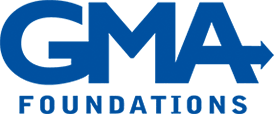
Summary: A leading funder of vision research in the United States developed a “map” of key funders and players in vision research as part of a field scan to help them refine their grantmaking strategy.
Mapping the field to gain perspective
For over half a century, Research to Prevent Blindness (RPB) has been a leading funder of vision research in the United States, making grants to institutions and individual investigators on the cutting edge of understanding causes and treatments for sight-threatening conditions.
Nothing was broken operationally or strategically, but RPB’s Board knew it was time to look ahead. As background to considering the future role and activity of RPB, Board members and management asked for an overview of the specific environment in which vision research takes place.
They wanted a “map” of key funders and players in vision research, and a sense of how these players function together or in competition. They wanted to know the important trends in biomedical and vision research. In short, they needed context.
Analyzing how a research system works
GMA consultants came to the project as outsiders. While we understood grantmaking for biomedical research and medical fellowships, we had the advantage of not being immersed in the vision research field. We brought fresh eyes and neutral ears to understanding how the complex parts of the research system fit together.
Our goal was to help our client understand who participates in vision research funding, how much they spend, and how they direct their resources. RPB was especially interested in how the players interact, collaborate, support each other, or leave gaps.
Our field scan looked at budgets and reports, government web sites, and foundation filings. Most importantly, we interviewed a selection of participants in the field, ranging from ophthalmology department chairs to foundation directors.
Validating the role of flexible grant funding for research
What we found in the field scan was largely unsurprising. The National Eye Institute of the National Institutes of Health (NEI) remains the biggest funder of vision research, allocating over $600 million to extramural research in 2017. In size, NEI’s investments far exceed those of private foundations, but they have a different risk profile. Many private funders, including RPB, frequently support younger investigators and earlier-stage work that, if successful, will later win NEI grant support. Remembering the scale of NEI influence serves as a reminder of RPB’s legacy: its founder, Dr. Jules Stein, was a prime mover in establishing NEI as a distinct, purposeful unit.
The other very large players in the field of vision research are venture investors and corporate sponsors pursuing drugs or devices with commercial potential. We ascertained that this part of the funding system is growing, but difficult to track or predict. We also learned that a niche occupied by RPB—which provides flexible research funding to about 40 leading university ophthalmology departments—is highly valued and singular.
Results
After reflecting on the field scan by GMA Foundations, Research to Prevent Blindness began a strategic planning process. By first surveying its dynamic environment, the organization is now better able to consider its possible futures, including what aspects of its process to keep, what to change, and what new initiatives or collaborations would enhance its abiding mission.
